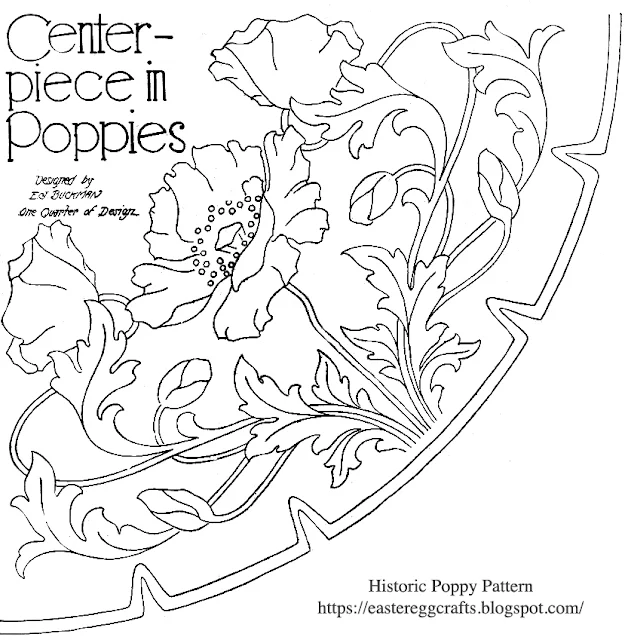I am furnishing you a pretty design today. the very name of which
will call to your mind the peasantry of the Balkan Mountains who are
noted for their remarkable skill in completing some of the handsomest
embroidery of historical beauty. It is their aim and delight to use a
great many colors, intermingling them in a manner so clever that one
color blends like a shadow into its adjoining part.
For this pattern I suggest for the center pieces, or floral motif,
the different shades of blue, ranging it from pale blue to a china or
phenol blue, or begin the wheel center with medium blue and graduate the
tones to a navy blue. In the stem and leaf portions use dark leaf green
in outline, then a lighter green for leaves, with a very pale
tip-green. The butterfly can be worked in Delf blue with wing spots of
blue, two colors, and a mere touch of green. Miniature triangles on
collar border should be worked in green. Fill the notches in
satin-stitch of dark green floss, and border with a scallop of dark
blue. I have offered this color scheme because the colors, as a rule,
wash well.
All portions are in solid effect, with the exception of wheels,
made with Battenberg stitches. The pattern can be developed in all
white, but I feel sure you will like a color effect to create a decided
novelty in your finished collar. Sincerely yours, Winifred Worth
 |
| Restored illustration of collar design. |





